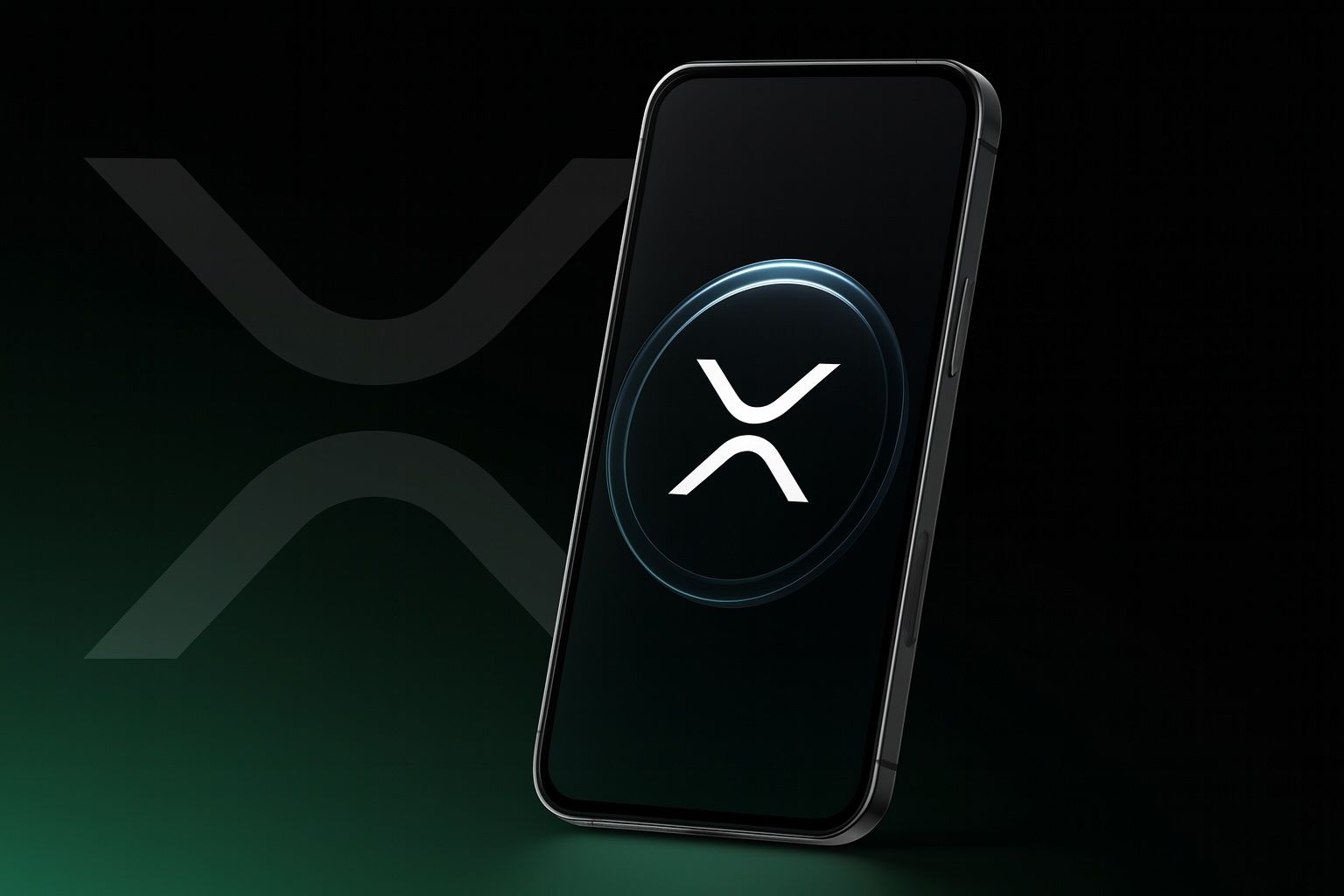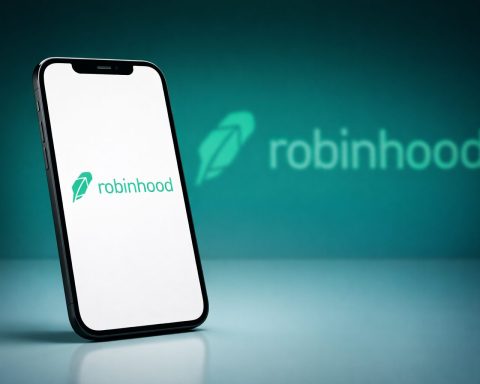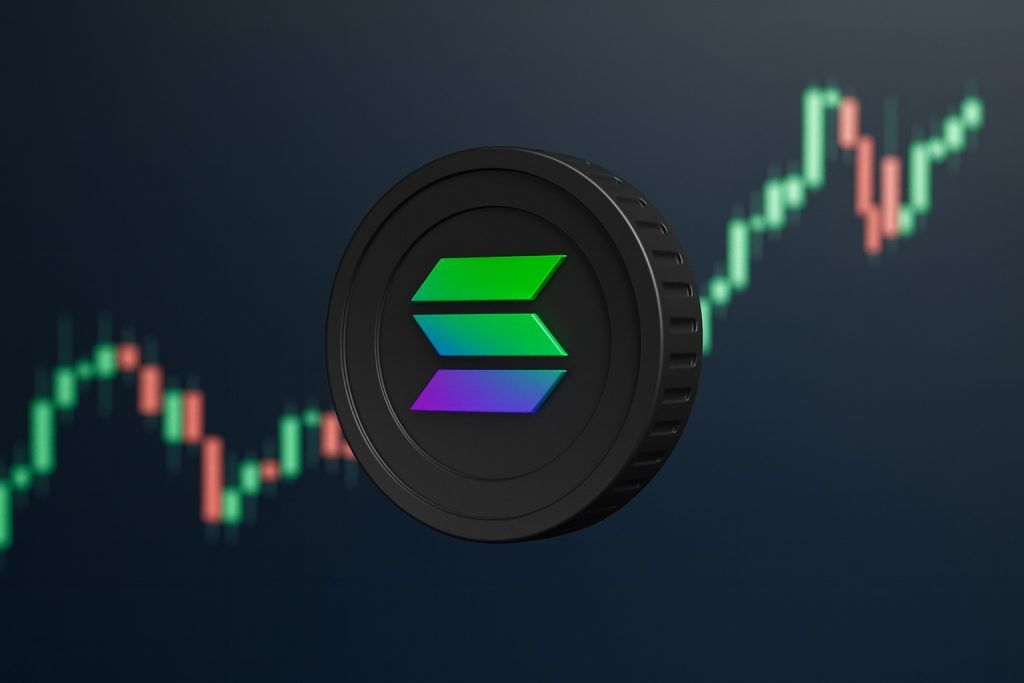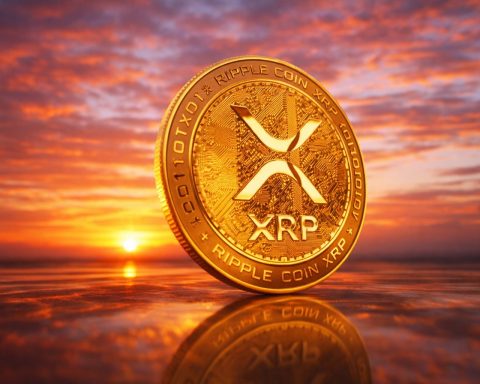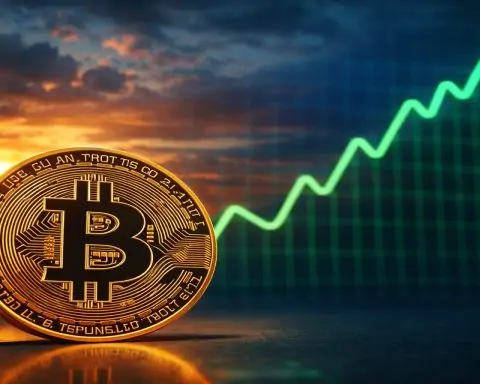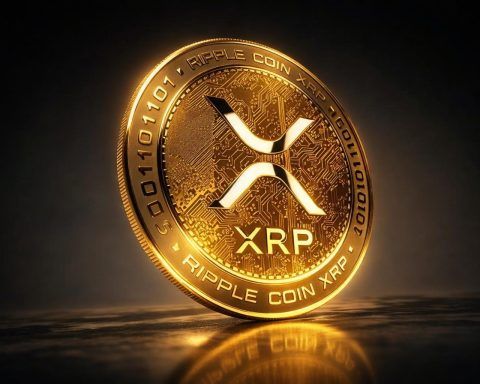- Current Price (Oct 20, 2025):XRP trades around $2.45 today after a fresh 5% jump, buoyed by a broader crypto market rebound [1]. The token is roughly +40% in 2025 (year-to-date) and +400% year-over-year, cementing XRP as the 3rd largest cryptocurrency globally by market value [2].
- Recent Volatility:XRP plunged 42% in a flash crash on Oct. 10 (down to ~$1.64) amid a U.S.–China trade shock [3], then recovered above $2.40 within 48 hours as dip-buyers stepped in [4]. This week the coin consolidated in the mid-$2s before rebounding on improved sentiment.
- Regulatory Clarity & ETFs: In August, Ripple’s legal victory over the SEC removed a major overhang – XRP was affirmed not a security in public sales [5]. U.S. exchanges promptly relisted XRP, and multiple asset managers (BlackRock, Grayscale, etc.) filed for spot XRP ETFs [6]. Analysts peg approval odds near 100% by late October [7], anticipating that even one SEC approval could “open the floodgates” of institutional money [8].
- Whales & Market Sentiment: On-chain data show large “whales” moved ~320M XRP (~$950M) to exchanges in early October [9] – a signal of heavy selling pressure. Nonetheless, many retail and institutional traders are “buying the dip” post-SEC win [10]. Sentiment is cautiously bullish, though XRP has struggled below $3 without an ETF catalyst (lagging Bitcoin/Ethereum’s ETF-fueled rally) [11].
- Relative Performance:Bitcoin’s October surge to ~$125,000 (a new all-time high) and Ethereum’s run past $4,200 outpaced XRP’s gains [12]. XRP’s market cap (~$144 B) is about 3–4% of total crypto value [13]. Unlike BTC and ETH – which already enjoy U.S. spot ETFs – XRP’s price hasn’t yet benefited from direct ETF inflows and remains below its 2018 peak [14].
- Analyst Forecasts:Standard Chartered projects XRP ~$5.50 by end-2025 (and ~$12+ by 2028) if adoption and ETF tailwinds materialize [15]. Crypto analysts likewise see a path to $4–$5 in the near term on a confirmed breakout [16]. However, bears warn of a drop toward ~$2.20 if XRP fails to hold key support (~$2.75) [17], with some even cautioning of sub-$1 scenarios by 2026 in a worse-case downturn.
- Ripple’s Latest Moves: Ripple is proactively shoring up XRP’s fundamentals. The company announced a $1 billion initiative to buy back 1 billion XRP for a new “digital treasury,” reducing circulating supply and potentially creating a supply shock over time [18]. Ripple also launched an XRP-backed stablecoin (RLUSD) on the XRP Ledger, which burns XRP fees on each transaction [19] – boosting demand as usage grows. Over 300 financial institutions now utilize RippleNet’s payment network (with many using XRP for cross-border liquidity) [20], underscoring real-world adoption.
XRP Price Climbs Back on Market Rebound and Fed Tailwinds
XRP is trading around $2.45–2.46 on October 20, staging a solid rebound after weeks of turbulence [21]. The token jumped nearly 5% in the past 24 hours amid renewed risk appetite in crypto markets, as gains in bellwethers Bitcoin and Ethereum lifted major altcoins across the board [22]. Analysts say improving macro sentiment – including hints of future Fed interest rate cuts – has put investors back in a “risk-on” mood, helping XRP recover from recent lows [23]. The broader crypto upturn appears to have flushed out weaker hands, paving the way for a more sustained advance, traders note [24]. On-chain metrics also point to accumulation by large holders during the dip, suggesting whale demand may be underpinning XRP’s rise and providing stronger price support [25].
Market technicians are encouraged by XRP’s technical breakout this week. According to Anton Kharitonov, a crypto analyst at Traders Union, multiple bullish catalysts are aligning: “XRP’s upside today is backed by multiple factors — macro tailwinds, regulatory hopes and a technical breakout. If momentum holds, we could see a move toward the next resistance around ~$3.50, though any macro or regulatory hitch could quickly stall gains.” [26]. He noted that holding the ~$2.45–$2.50 zone as support is key; if XRP stays above that level, it could retest the $2.70 range in the near term, potentially setting up an attempt at the psychological $3.00 mark [27]. For now, short-term momentum favors the bulls, as XRP’s climb has drawn in fresh buyers after a period of consolidation.
Legal Victory and ETF Hype Ignite XRP Bulls
One of the biggest drivers behind XRP’s 2025 surge has been regulatory clarity. In August, Ripple scored a landmark victory when the U.S. Securities and Exchange Commission settled its lawsuit against the company, dropping all appeals and ending a multi-year legal battle [28]. Ripple agreed to pay a $125 million fine, but crucially Judge Torres’s 2023 ruling was cemented – XRP sales on public exchanges are not securities [29]. This outcome removed the longstanding “dark cloud” over XRP [30]. Almost immediately, major U.S. exchanges like Coinbase and Kraken relisted XRP for trading [31], and institutional interest surged.
The legal green light also unleashed a wave of XRP ETF speculation. Within weeks of the SEC case ending, at least six heavyweight asset managers – including BlackRock, WisdomTree, Grayscale, Bitwise, and Franklin Templeton – filed applications for the first-ever spot XRP ETFs in the U.S. [32]. Approval deadlines were set for mid-to-late October, and despite a brief U.S. government shutdown slowing the review process, analysts remain almost certain the SEC will give a nod. Bloomberg Intelligence analysts estimate a “near-100%” chance of at least one XRP ETF approval by the end of October [33]. Such an approval is seen as a game-changer; as one report put it, even a single ETF launch is expected to “open the floodgates” of institutional capital into XRP [34].
The mere anticipation of a spot ETF has already had tangible market effects. Bitcoin and Ether – which obtained spot ETF listings earlier this year – both rallied to new all-time highs in October, partly on the back of massive fund inflows. Bitcoin blew past $100K to briefly top $126,000 on Oct 5 amid record crypto ETF inflows [35], and Ethereum surged to ~$4,200. XRP, lacking an approved ETF so far, initially lagged those moves. Still, investors have been positioning for an XRP fund launch: in the first week of October, XRP-focused investment products saw roughly $219 million in inflows (versus $3.5 billion into Bitcoin funds during the same period) [36]. This indicates substantial pent-up demand waiting on regulatory approval.
Ripple’s CEO Brad Garlinghouse has called the SEC settlement and prospective ETFs “validation of XRP’s legitimacy” in the market. Crypto legal experts note that Bitcoin and Ethereum currently enjoy a “market advantage” thanks to existing U.S. ETFs, whereas “XRP is struggling to stay above $3” without one [37]. That dynamic could shift quickly if the SEC delivers a long-awaited approval. All eyes are now on Washington as traders await the SEC’s spot XRP ETF decision, expected any day. A yes vote could spark a rush of new money into XRP, while any surprise delay or denial would likely disappoint the market.
Ripple’s $1 Billion Buyback & Growing Real-World Adoption
Beyond courtroom victories and ETF betting, Ripple’s own actions are bolstering confidence in XRP’s long-term value. In mid-October, Ripple unveiled plans to purchase $1 billion worth of XRP – roughly 1 billion tokens – as part of a fundraising initiative to establish a “digital treasury” for the asset [38]. By buying back and holding such a large amount of XRP, Ripple aims to tighten the token’s supply and enhance price stability over time. This could effectively remove a chunk of circulating supply (currently around 4.5 billion XRP available, with another ~37 billion locked in escrow) [39], creating a potential supply shock that benefits long-term holders if demand continues to rise. The treasury plan is also intended to support new financial products based on XRP, signaling Ripple’s commitment to the token’s ecosystem.
At the same time, Ripple has been expanding its infrastructure through acquisitions. On October 16, the company acquired GTreasury, a corporate treasury management firm, for $1 billion [40]. This move gives Ripple in-house tools to help enterprises manage digital assets (including stablecoins and tokenized deposits) on their balance sheets. It aligns with Ripple’s broader strategy to integrate XRP into traditional finance operations. “Ripple is essentially fortifying the rails for institutional adoption,” commented a fintech analyst, noting that managing crypto treasuries will be crucial as more companies adopt digital assets.
On the technology front, Ripple continues to push new use cases for XRP. The XRP Ledger (XRPL) – the decentralized blockchain powering XRP – saw the launch of a U.S. dollar-pegged stablecoin called RLUSD in late 2024 [41]. Notably, every RLUSD transaction burns a small amount of XRP as a fee [42], meaning increased stablecoin usage could directly translate into greater demand (and deflationary pressure) for XRP. Ripple has highlighted this design as a way to drive organic value: as banks and businesses utilize RLUSD for fast cross-border settlements, they indirectly boost XRP’s utility and scarcity.
Meanwhile, real-world adoption of Ripple’s payment network continues apace in 2025. Over 300 banks, remittance providers and finance companies worldwide have joined RippleNet so far [43]. Many of them participate in On-Demand Liquidity (ODL) corridors, where XRP is used as a bridge currency to facilitate near-instant international transfers. According to Ripple, roughly 40% of partnered institutions are now leveraging XRP for cross-border payments [44] – a significant increase from prior years. High-profile partners include Santander Bank, American Express, PNC Bank, and Japan’s SBI Remit, all of whom have piloted XRP in real payment flows [45]. This growing utility provides an “organic demand floor” for XRP’s price, as even when speculative trading cools, there remains steady usage of XRP in global money transfers and liquidity provisioning [46]. Ripple’s continued focus on real-world utility and strategic buybacks is seen as reinforcing the long-term investment case for XRP, regardless of short-term market swings.
Wild Swings, Whale Sell-Offs and Market Sentiment
Even with its positive trajectory, XRP has experienced wild volatility in recent weeks, underscoring that this rally hasn’t come easy. In the first half of October, a perfect storm of macro jitters and whale selling sent XRP on a rollercoaster ride. The most dramatic episode came on October 10, when an unexpected geopolitical shock roiled markets – U.S. President Donald Trump announced surprise 100% tariffs on all Chinese imports, sparking fears of a renewed trade war [47]. The news triggered a flash crash across crypto assets. Within minutes, XRP plummeted from around $2.77 to as low as $1.64, a collapse of roughly 41% intraday [48]. Hundreds of millions of dollars in leveraged positions were wiped out; over $150 million in XRP futures were liquidated as prices cascaded [49]. It was one of the steepest single-day drops for XRP in years, briefly erasing nearly $20 billion in market cap.
Remarkably, XRP’s community and institutional buyers showed resilience in the face of the crash. By the very next day, opportunistic buying had kicked in, and within 48 hours XRP had bounced back above $2.40 [50]. The rapid recovery was fueled in part by large players swooping in at fire-sale prices. CoinDesk reported that on October 12, aggressive institutional dip-buying drove XRP from ~$2.37 back up to $2.58, restoring about $30 billion in value almost overnight [51]. Trading volumes surged to nearly triple the 30-day average during the rebound, indicating capitulation by weak hands and accumulation by others [52]. By October 13, XRP was trading around $2.57 – up ~8.5% in 24 hours – firmly off the lows and back in an ascending price channel [53]. This V-shaped rebound in the face of panic selling bolstered confidence that strong demand lurks below $2.50, at least in the current climate.
Still, the turmoil highlighted the role of whale investors in XRP’s market. Blockchain sleuths observed that around the time of the crash, some large holders were moving unusually big sums of XRP. In early October, one whale wallet offloaded 160 million XRP (≈$480 million), and over 320 million XRP in total flowed from whale addresses to exchanges during that period [54]. Such large transfers are often a precursor to sell-offs, and indeed crypto analytics firm CryptoQuant warned that “selling pressure persists” from XRP whales, even after prices stabilized [55]. Another analyst, CryptoOnchain, noted the on-chain data “strongly suggests whales are positioning for a significant sell-off” [56]. This overhead supply from profit-taking whales likely contributed to XRP’s struggle to break back above the $3.00 resistance in recent weeks [57]. Each time XRP neared the $3 mark (such as during the early October rally), sellers emerged to cap the gains.
Market sentiment around XRP remains mixed – a tug-of-war between bullish fundamental outlooks and cautious technical signals. On one hand, retail XRP enthusiasts are reinvigorated by Ripple’s court win and the prospect of an ETF. Social media forums show many holders proclaiming they are “diamond-handing” XRP (holding without intention to sell) in anticipation of bigger gains ahead [58]. The fact that XRP recovered quickly from the flash crash is seen as evidence of new buyers’ appetite. On the other hand, veteran traders urge caution given the recent volatility and whale distribution. “Talk is cheap; the market wants proof” of a sustained breakout, one CoinDesk market analyst quipped, emphasizing that XRP needs to decisively clear its 2018 high (~$3.30) to really flip market psychology bullish [59] [60]. Until then, the risk of abrupt pullbacks remains. Analysts point to ~$2.75 as a crucial support level in the short term – roughly the zone of the 50-day moving average and recent dip lows [61] [62]. If XRP were to slide back and lose the $2.75–2.80 support, it could accelerate downside momentum. Famed chartist Peter Brandt has even put XRP on his “short watchlist”, warning that a breakdown below that support could send prices down toward ~$2.20 in a hurry [63]. For now, XRP is comfortably above those danger levels, but traders are watching the charts closely.
Macro factors also continue to sway sentiment. The recent dovish signals from Federal Reserve officials – hinting at potential rate cuts if inflation eases – have improved the backdrop for risk assets like crypto [64]. Such macro tailwinds, combined with Ripple’s positive news flow, give bulls a strong narrative. Yet any adverse headlines (e.g. regulatory delays, geopolitical flare-ups) could quickly test XRP’s newfound stability. As one market observer noted, “until a true breakout happens, XRP will be prone to whip-saw moves” – meaning volatility is likely to remain elevated in the near term.
Experts Predict Paths to $5… and Warnings of Downside
Where can XRP’s price go from here? On this question, analysts and experts are divided, with forecasts spanning from extremely bullish to highly conservative. In the bullish camp, many point to the confluence of positive forces – legal clarity, potential ETF approval, growing adoption – as a recipe for significant upside in the coming months. Standard Chartered, a major global bank, made headlines with a report this spring predicting XRP could reach $5.50 by the end of 2025 [65]. If achieved, that would mark a new all-time high for XRP (surpassing the ~$3.84 peak from the 2018 bull run). The bank’s head of digital assets research, Geoffrey Kendrick, argued that XRP is “uniquely positioned at the heart of one of the fastest-growing use cases for digital assets – facilitating cross-border payments.” [66] With Ripple actively targeting the $150 trillion global remittance and settlement market, Standard Chartered believes XRP can keep pace with Bitcoin’s price appreciation through this cycle [67] [68]. Their roadmap envisions XRP hitting $8 by 2026 and as high as $12.50 by 2028, assuming continued adoption and no major regulatory hurdles [69].
Other reputable analysts have issued bullish yet more tempered outlooks. Bloomberg Intelligence (via AInvest) recently set a baseline target of $3–$5 for XRP by late 2025, with an upside case up to roughly $6+ if one or more XRP ETFs launch and bring in fresh capital [70]. Research from Nasdaq’s Motley Fool points to around $4 within the next year as a reasonable expectation, given XRP’s role as a “bridge currency” and improving macro conditions [71]. A number of crypto market strategists see $4–$5 as an achievable short-term range if XRP can break above its multi-year resistance around ~$3.30 and sustain momentum. Popular trader forums are abuzz with posts about a possible “rip to $5” should a favorable ETF decision hit, with some even speculating a run toward $10 in an absolute best-case scenario (e.g. if multiple ETFs launch amid a crypto-wide bull market). Chart-wise, bullish patterns like inverse head-and-shoulders formations and bull flags have been spotted on XRP’s longer-term price charts, potentially pointing to technical price targets in the mid-$4s [72]. In short, the optimistic view is that XRP is at the cusp of a major breakout, finally nearing the end of a years-long basing period since 2018. If new institutional money flows in and Ripple’s ecosystem growth continues, bulls argue XRP could retest its highs and even enter price discovery above $5.
However, not everyone is convinced the stars will align so perfectly. Veteran traders and skeptical analysts urge caution, noting that XRP has a history of boom-and-bust cycles and prolonged consolidations. Peter Brandt – known for calling past crypto corrections – recently identified XRP as a prime “short candidate” at current levels, citing a bearish technical pattern (a potential descending triangle). Brandt warned that if XRP fails to clear resistance and instead falls back below ~$2.75, it would complete a breakdown that “could send it toward $2.20” or lower, based on classical chart measuring techniques [73]. Some quantitative models also flash warning signs. For instance, crypto trading platform Mitrade’s simulations project that, under bearish conditions (e.g. weak demand, no ETF, macro downturn), XRP could even slide below $1 by 2026 [74] – essentially erasing the gains made in 2025’s rally. While that scenario is an outlier, it underscores the range of outcomes that analysts are contemplating. Even more moderate views, like Bloomberg’s “conservative scenario,” suggest XRP might be capped around $2.50–$3.00 through year-end if regulatory approvals get delayed [75] or if crypto markets cool off. In this view, XRP could remain stuck in a sideways range, and holders would need patience through additional volatility. Long-term investors are cautioned to brace for turbulence, as XRP’s road upward may not be a straight line [76].
And what about the extreme ultra-bull case often touted in online communities – figures like $100 or even $1,000 per XRP? These have proliferated in the wake of XRP’s legal win, but most experts view them as distant fantasies for now. One oft-cited prediction from crypto exchange Changelly suggests XRP could reach $1,000… by the year 2040 (15 years from now) [77]. But holding out for such astronomical gains requires an iron stomach. Vincent “Van Code,” a prominent XRP-focused software engineer, joked this week that it takes “serious conviction or, frankly, mental illness, to hold XRP all the way to $1,000” [78]. He noted that many investors dream of massive 1000x returns, but in reality few have the discipline to hold through the multiple 80% drawdowns that would likely occur en route to such a price [79]. Van Code’s comments, while tongue-in-cheek, highlight the psychological challenge of chasing sky-high targets: most people end up taking profit or panic-selling long before those levels are ever near. In practice, the $5–$10 range is the more commonly cited upper ambition among bullish analysts for the next couple of years – anything beyond that ventures into speculative fantasy absent dramatic industry-changing developments.
Bottom Line: As of late October 2025, XRP has regained its footing after a tumultuous start to the month. The stage is set for a pivotal few weeks ahead. In the short term, crypto traders are watching whether XRP can hold above support around $2.50 and break through the formidable $3.00–$3.30 resistance zone that has capped it for so long. A successful breakout, especially if accompanied by positive news like a U.S. ETF approval, could quickly propel the token toward the bulls’ next targets around $4 and beyond. Conversely, any disappointment on the regulatory front or a broader market pullback could see XRP revisiting the mid-$2s or lower, re-testing the resolve of recent buyers. In the long run, Ripple’s strengthened fundamentals – from legal clarity to real-world utility and controlled supply – have many believing that XRP’s best days lie ahead, potentially making a run at new highs by 2025’s end. For now, XRP investors find themselves at a crossroads of high hopes and lingering risks, with the market eagerly awaiting the next catalyst that will determine whether Ripple’s coin rockets toward $5 or faces another twist in its volatile journey.
Sources: XRP market data and analysis from TS² and crypto news outlets [80] [81] [82] [83], Reuters and CoinDesk reports on crypto ETFs and forecasts [84] [85], and Traders Union insights on recent price action [86]. (All information current as of Oct. 20, 2025.)
References
1. tradersunion.com, 2. ts2.tech, 3. ts2.tech, 4. ts2.tech, 5. ts2.tech, 6. ts2.tech, 7. ts2.tech, 8. ts2.tech, 9. ts2.tech, 10. ts2.tech, 11. ts2.tech, 12. ts2.tech, 13. ts2.tech, 14. ts2.tech, 15. www.coindesk.com, 16. ts2.tech, 17. ts2.tech, 18. coincentral.com, 19. ts2.tech, 20. ts2.tech, 21. tradersunion.com, 22. tradersunion.com, 23. tradersunion.com, 24. tradersunion.com, 25. tradersunion.com, 26. tradersunion.com, 27. tradersunion.com, 28. ts2.tech, 29. ts2.tech, 30. ts2.tech, 31. ts2.tech, 32. ts2.tech, 33. ts2.tech, 34. ts2.tech, 35. www.reuters.com, 36. www.reuters.com, 37. ts2.tech, 38. coincentral.com, 39. coincentral.com, 40. coincentral.com, 41. ts2.tech, 42. ts2.tech, 43. ts2.tech, 44. ts2.tech, 45. ts2.tech, 46. ts2.tech, 47. ts2.tech, 48. ts2.tech, 49. ts2.tech, 50. ts2.tech, 51. ts2.tech, 52. ts2.tech, 53. ts2.tech, 54. ts2.tech, 55. ts2.tech, 56. ts2.tech, 57. ts2.tech, 58. ts2.tech, 59. ts2.tech, 60. ts2.tech, 61. tradersunion.com, 62. ts2.tech, 63. ts2.tech, 64. tradersunion.com, 65. www.coindesk.com, 66. www.coindesk.com, 67. www.coindesk.com, 68. www.coindesk.com, 69. www.coindesk.com, 70. ts2.tech, 71. ts2.tech, 72. ts2.tech, 73. ts2.tech, 74. ts2.tech, 75. ts2.tech, 76. ts2.tech, 77. thecryptobasic.com, 78. thecryptobasic.com, 79. thecryptobasic.com, 80. ts2.tech, 81. ts2.tech, 82. www.coindesk.com, 83. thecryptobasic.com, 84. www.reuters.com, 85. www.coindesk.com, 86. tradersunion.com
